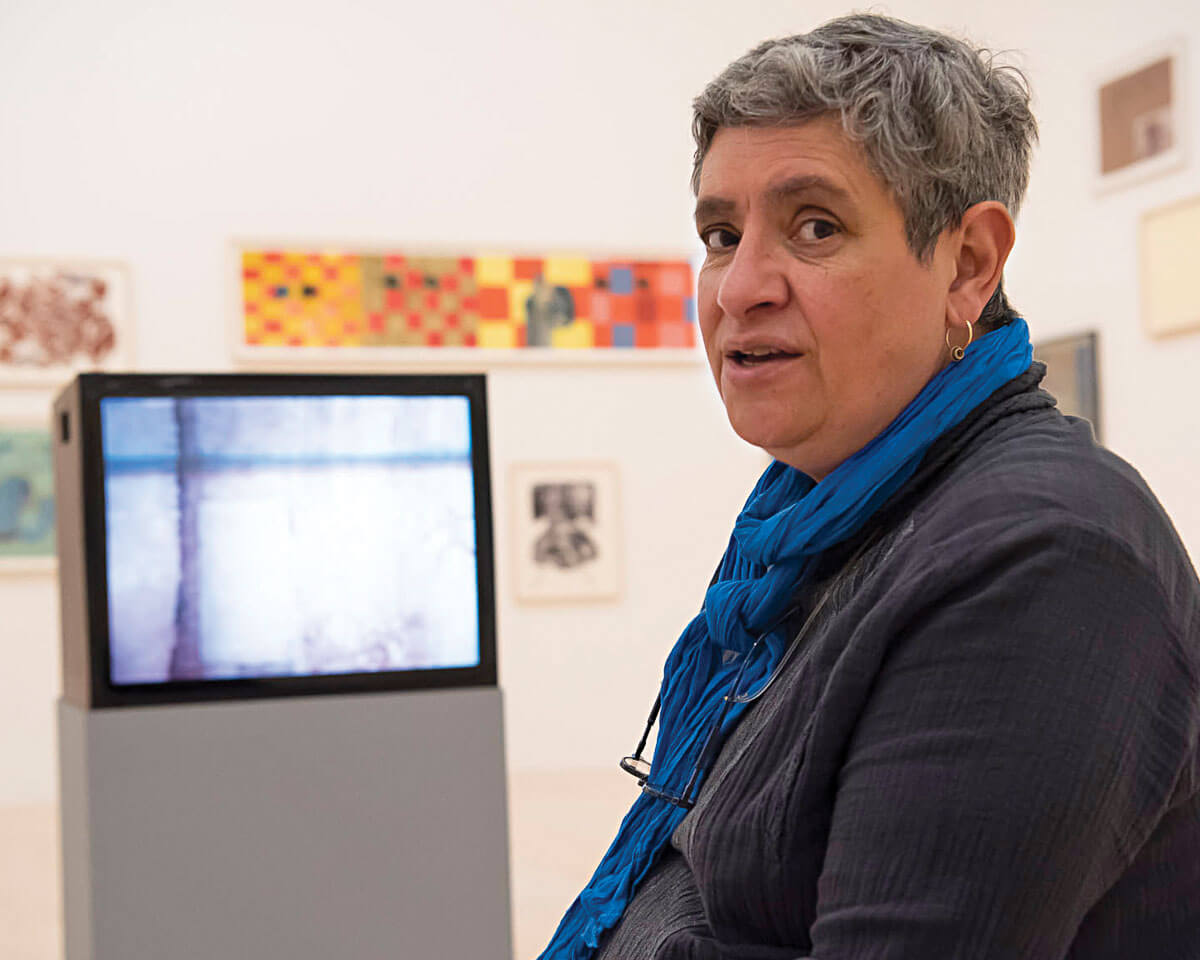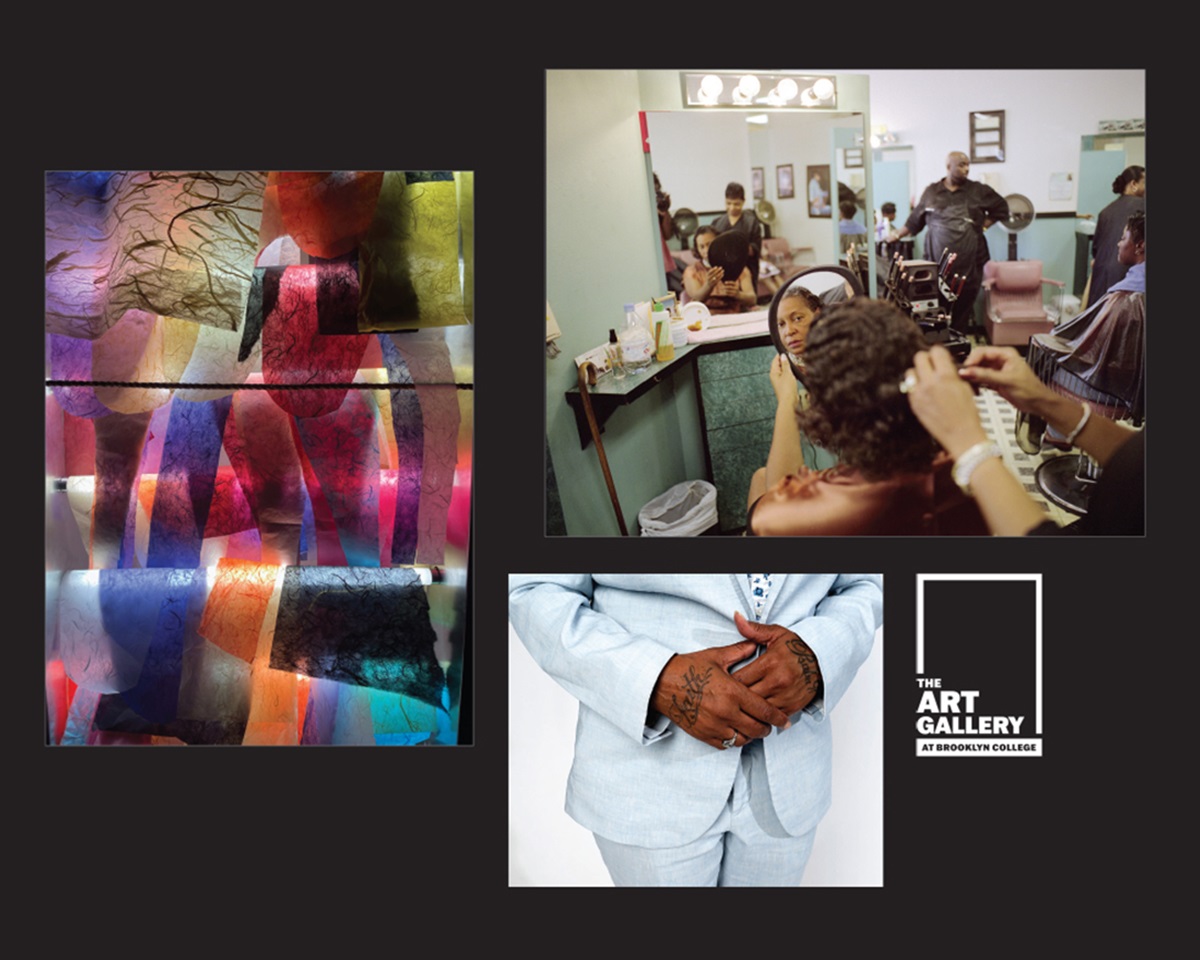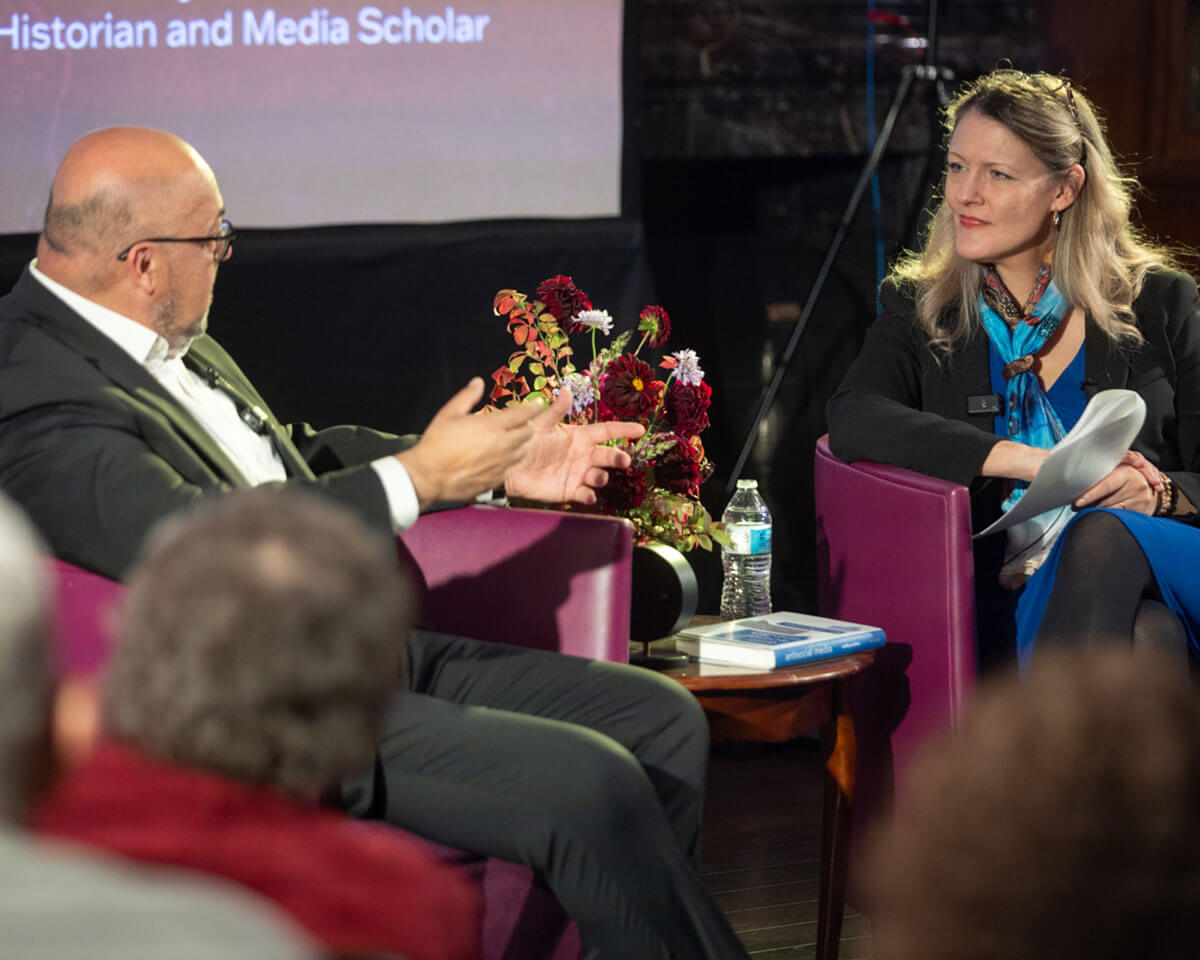When Associate Professor of Television and Radio Irene Sosa was finishing her master of fine arts in film and television at New York University, she and a friend decided to start a cleaning business.
“We figured we would clean houses until we got the big job,” she says.
What Sosa didn’t realize was that cleaning houses would lead to the big job. She ended up scrubbing the New York City home of the renowned artist and activist Nancy Spero (1926–2009), whom she eventually befriended. Spero was celebrated as a feminist who took on oppression, war, violence, and more in work that ranged from sketches and collages to epic-scale paintings. Sosa asked if she could produce a documentary about her. Spero said yes. Since then, Sosa has gone on to make 13 documentaries tracking the radical artist and her processes as she matured and gained more recognition. When Spero was commissioned for new work, she would often ask Sosa to tag along. The documentaries include much biographical information and at times capture Spero working with art students, but mostly follow Spero as she created her many installations and other projects over the years.
Many of those documentaries were on display earlier this year at Paper Mirror, a critically acclaimed MoMA PS1 exhibit of Spero’s work. The documentaries—culled from an anthology of the Spero documentaries that Sosa was commissioned to put together by Centro Galego de Arte Contemporánea in Galicia, Spain—played on monitors throughout the exhibit. The show included a separate room on the first floor of the museum with four monitors featuring Sosa’s work.
Sosa’s career as a documentarian has won her much acclaim, including an Individual Artist’s Fellowship from the New York Foundation for the Arts, a fellowship from the Andrea Frank Foundation, and an Individual Artist grant from the New York State Council on the Arts. She has also received five PSC-CUNY Research Awards as well as a Brooklyn College Creative Achievement Award.
“Having my documentaries shown as part of MoMA’s retrospective of Spero’s extraordinary work this spring was a thrill for me as it recognized my 35 years as a documentary filmmaker,” says Sosa. “Having such a show, which was also at the prestigious Rufino Tamayo Museum in Mexico City a few months before, was a dream come true for me and a great tribute to my work.”
Return to the BC Magazine



